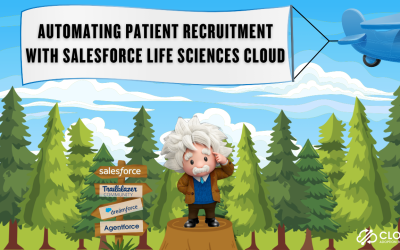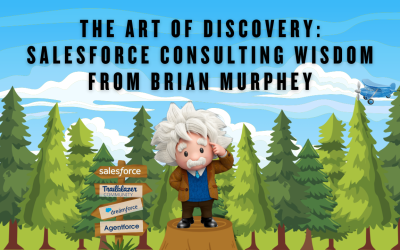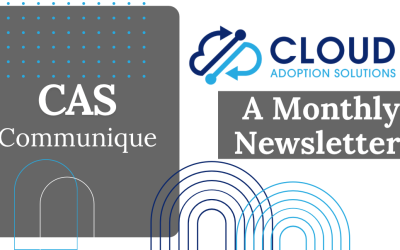How do you make your Salesforce org “sellable”? If you’re entering an M&A event, your Salesforce instance will be one of the primary ways to identify the leading indicators of pipeline, and therefore company, value. Join Natalie Battista MBA and Shannon J Gregg PhD as they discuss ways to get your Salesforce org ready and sellable!
For a deeper conversation on this topic, join our webinar “Top Salesforce Tips for M&A Events” on June 16. Register here: bit.ly/SFMandA
Contact us with your Salesforce challenges at info@cloudadoption.solutions – we love to help!
Cloud Adoption Solutions is a 100% woman-owned registered Salesforce partner, specializing in implementation, integration, and optimization for Technology, Healthcare/ Life Sciences, and Financial Services/ Professional Services organizations in the small and mid-commercial sectors.
VIDEO TRANSCRIPT:
SUMMARY KEYWORDS
process, org, salesforce, best practice, reports, cleanup, clean, purchased, making, conversation, data, absorbing,, acquired, sellable, salesforce org, admin, tips, pipeline, optimizer
Shannon Gregg 00:14
How do you make your Salesforce org sellable? That is such a good question. I know there are a lot of people out there who are interested in the answers to that. So I’m joined today by Natalie Battista of cloud adoption solutions. I’m Shannon Gregg, also of cloud adoption solutions, we are going to talk to you for a few minutes about how to make your Salesforce org one that is sellable when you’re in an event, an m&a event. Hey, Natalie, I’m so happy to be with you today.
Natalie Battista 00:43
Hey, nice to see you, too. Thanks for getting on this call with me.
Shannon Gregg 00:47
Well, we’ve been having this question. And so you and I decided that we would have this conversation sort of out loud, because we’ve been through this actually before together, where we’ve had multiple Salesforce instances that needed to be integrated or absorbed or considered. And one of the things that we know that’s really important whenever you’re looking to make an acquisition or be acquired, is having really, really good data to say, what’s in the future of this pipeline? What’s happening here? So tell me, Natalie, what do you think is driving this sort of, I think renewed interest in making sure that Salesforce orgs are sellable?
Natalie Battista 01:27
That’s a good question. So a lot of times our clients come to us, and they just need basic cleansing or data cleanup, and you throughout the conversation to hear that they may be getting purchased. And sometimes that conversation triggers things, you know, as an admin, so one of the things I think about is, you know, if there isn’t an admin dedicated to that org, so typically, you’re gonna see a messy org. And by messy, I mean, are there duplicate roles? Are there old reports? Are the layouts all over the place? Are there record types, like tons and tons of record types against objects. So what I tried to think about in making something sellable is just making your org presentable. And at the same time, making sure there’s governance around what you do on a monthly basis. So not only are you making sure you have a duplicate rule, but every month, you’re looking at your duplicates, and you should be doing that, regardless of if you’re getting purchased. So it should be a normal monthly admin test to look at certain things. And that’s where this conversation kind of started.
Shannon Gregg 02:41
It really should be. And I think, you know, best practices are best practices, because they have to be practiced, right? It’s not something you can do once and set it aside, you have to keep trying it over and over again. And I think, you know, you and I both experienced multiple times on the enterprise side where there’s that sort of fire drill, where somebody comes rushing at you and says, produce a report for me of our pipeline for the next six quarters, or show me what happened, what’s our difference between new business and existing business over the past five years. And so pulling in those sort of lagging and leading indicators depends on a really clean seal Salesforce instance. And that’s before the acquisition even happens, right?
Natalie Battista 03:22
Right. And you’ll see people in a frenzy saying, Oh, my gosh, our close dates are from six months ago. And then you want to ask them, why are you asking for these reports. And usually, there’s a reason behind it. So it’s not only that management wants it, but it could be that someone else is looking at it for a specific purpose. And that could be for a purchase. So in addition to just looking at pipeline, and looking at your reports in general, you know, part of the cleanup activity, our old reports, if before reports aren’t getting run, then that’s one place right there, you can start your cleanup. If your dashboards haven’t been refreshed in months, okay, then you have to ask yourself, Is anyone using these, if not, get rid of them, or archive them? Whatever your process is. That way, you can have either a monthly or a quarterly action to start a cleanup process, whether it be from reports or from duplicates, or are your accounts inactive? And are you marking them as such? If not, maybe something you want to monitor, take a look at.
Shannon Gregg 04:26
Those are such good tips, Natalie, and I think having good hygiene all of the time. Whether or not you’re involved in some sort of m&a event is is just going to make everybody’s lives easier, and it helps for coaching and helps her understanding what the business is going to look like what it’s shaping up to. But we know we’ve seen instances where we’ve been acquired and we’ve been the acquirer where there is a CRM system on the other side that they want you to fit into, or there may not be a CRM system but they know The value of your company can depend on what’s in the pipeline. So tell me a little bit about the sort of differences when you’re looking at somebody who doesn’t have an org versus somebody who does have an organ, how you’re presenting your org to them.
Natalie Battista 05:13
Sure. So let’s say you’re the parent company, you’re the one purchasing another company. And if you don’t have a lot of process built within your own org, one of the things that you’re going to be looking at in something that you’re going to be purchasing is process. Is there automation? Are there a lot of administrative burden areas in your org that you’re trying to get rid of? Are you using workflow rules, and they’re using process builder, so you want to take a look to see if there’s a similarity between the way you are automating something. And what I also would take a look at is how much code is in there org versus how much is in your org because of you’re absorbing them, you’re absorbing not only their data, but their process, which includes code. So you want to make that transition as smooth as possible. One other thing I would look at is historical data. So how much data you want to bring in? Do you want two years worth? Do you want five years worth because the more you bring in, then you need to look at your storage needs. So everything kind of wraps around each other. And it’s a long, complex conversation. And I think the best place to start is just looking at your setup menu. And if you’re an admin, just going through your setup many of you and just thinking to yourself, okay, have I run the optimizer, maybe I should, maybe I should implement Salesforce best practice, or my users using the system, click on your User button in your setup menu, take a look to see when they logged in list. Because you’re looking at license count, the parent company is not going to want to add licenses for people who aren’t using the system. So just by looking at your setup menu, it can give you all those you know, Quick Hits, take a look at your email templates, take a look at your email deliverability, your processes, your email alerts, your field updates, just to make sure everything’s up to date. And in order. Even if this is something where you’re as a parent looking to absorb best practices. If you’re going to acquire a smaller company or another company, they’re going to want to assimilate as easy as possible. So you want to kind of make some consistency and some kind of, you know, compromises during that transaction too.
Shannon Gregg 07:32
It’s great that you bring up that idea of consistency and compromises because there’s so much that goes into this because there’s the philosophical sort of sales process. So are you using Miller Heiman? or using Sandler? Are you using some sort of opportunity management system that tells you, this is how we do that? So there’s that sort of idea of how you do sales process? or How are you doing service process? You know, do you have a tier one? Do you move to tier two? Do you have auto assignment rules, how all those things sort of go in terms of how the people do their job, and use Salesforce to do it? And then there’s that technical side that says, How do we make sure that we’re assimilating everything in a way that makes sense, you know, getting rid of data redundancy, but keeping the data that’s really important, because when somebody is making an acquisition, they’re looking for efficiencies, right, they want to be able to say, we know there’s going to be some efficiencies in terms of how we manage clients, because there’s probably some client crossover, how we go to market, you know, there’s probably some sales, territory crossovers. And so the cleaner your orgs are on both ends, the easier it is to take on that, that sort of process of evaluating the, you know, philosophical process compared to the technological process. And, and that, I think, is, you know, one of the most interesting things about this topic,
Natalie Battista 08:49
I think, if you were at least making an attempt to clean up these items, the person who’s acquiring he was going to look at you and say, okay, they’re trying to keep this word clean. And like we said, In the beginning, these are things that you should do monthly or quarterly, this is not just because you’re getting purchased. So anytime you’re you’re a solo admin or you have a team you know, set up some tasks for yourself to start cleaning out these things on a regular because it’s only going to you know, benefit you at the end of the year when you have to go through an audit all of your files and content and to see the last time someone downloaded something. So just make your life easier by taking you know the small incremental steps and start with that setup menu. I would say definitely do the optimizer report is that’s going to guide you from a Salesforce best practice, best practice perspective as to what points you need to start hitting on.
Shannon Gregg 09:39
This is awesome, Natalie, and I feel like I could keep having this conversation with you for a long time, which is a good thing because we’ve scheduled a webinar for June 15 called top Salesforce tips for m&a events and we’re bringing in transition Sherpa Laurie Barkman who is amazing. She is just incredible. I’ve I’ve heard her speaks so many times on mergers and acquisitions from both ends. And she’s spectacular. So she’s going to give some great tips for looking at assets during the merger and acquisition activity. And then you and I are going to be presenting some additional tips on preparing your Salesforce org in a deeper way, even than we discussed today. And I know I’m looking forward to it.
Natalie Battista 10:23
Yeah, we definitely lived through that. So we have some definite good tips to share with you guys.
Shannon Gregg 10:29
We sure have
10:32
good times. Well, thank you,
Shannon Gregg 10:34
Natalie, for joining me today. I think this was such a good and interesting conversation. I can’t wait to have it even more on June
Natalie Battista 10:41
15. My pleasure




